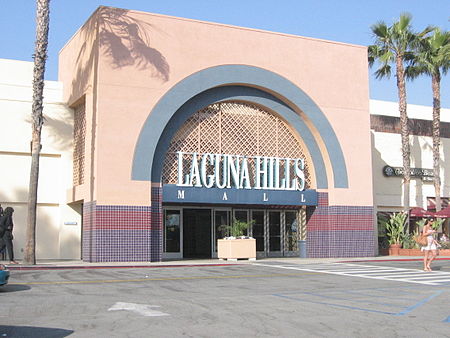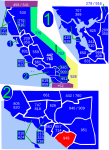Laguna Hills Mall
1973 establishments in California2018 disestablishments in CaliforniaAbandoned shopping malls in the United StatesLaguna Hills, CaliforniaMixed-use developments in California ... and 3 more
Shopping malls disestablished in 2018Shopping malls established in 1973Shopping malls in Orange County, California

Laguna Hills Mall was a shopping mall in Laguna Hills, California, in southern Orange County that is being redeveloped by the owners as Five Lagunas. The enclosed mall closed on December 31, 2018 and will be demolished. The exterior stores remain open. New retail, a movie theater, apartments, and a parking structure are currently planned to replace the old mall structure.
Excerpt from the Wikipedia article Laguna Hills Mall (License: CC BY-SA 3.0, Authors, Images).Laguna Hills Mall
Laguna Hills Mall,
Geographical coordinates (GPS) Address Nearby Places Show on map
Geographical coordinates (GPS)
| Latitude | Longitude |
|---|---|
| N 33.61081 ° | E -117.70709 ° |
Address
Laguna Hills Mall 24155
92653
California, United States
Open on Google Maps





